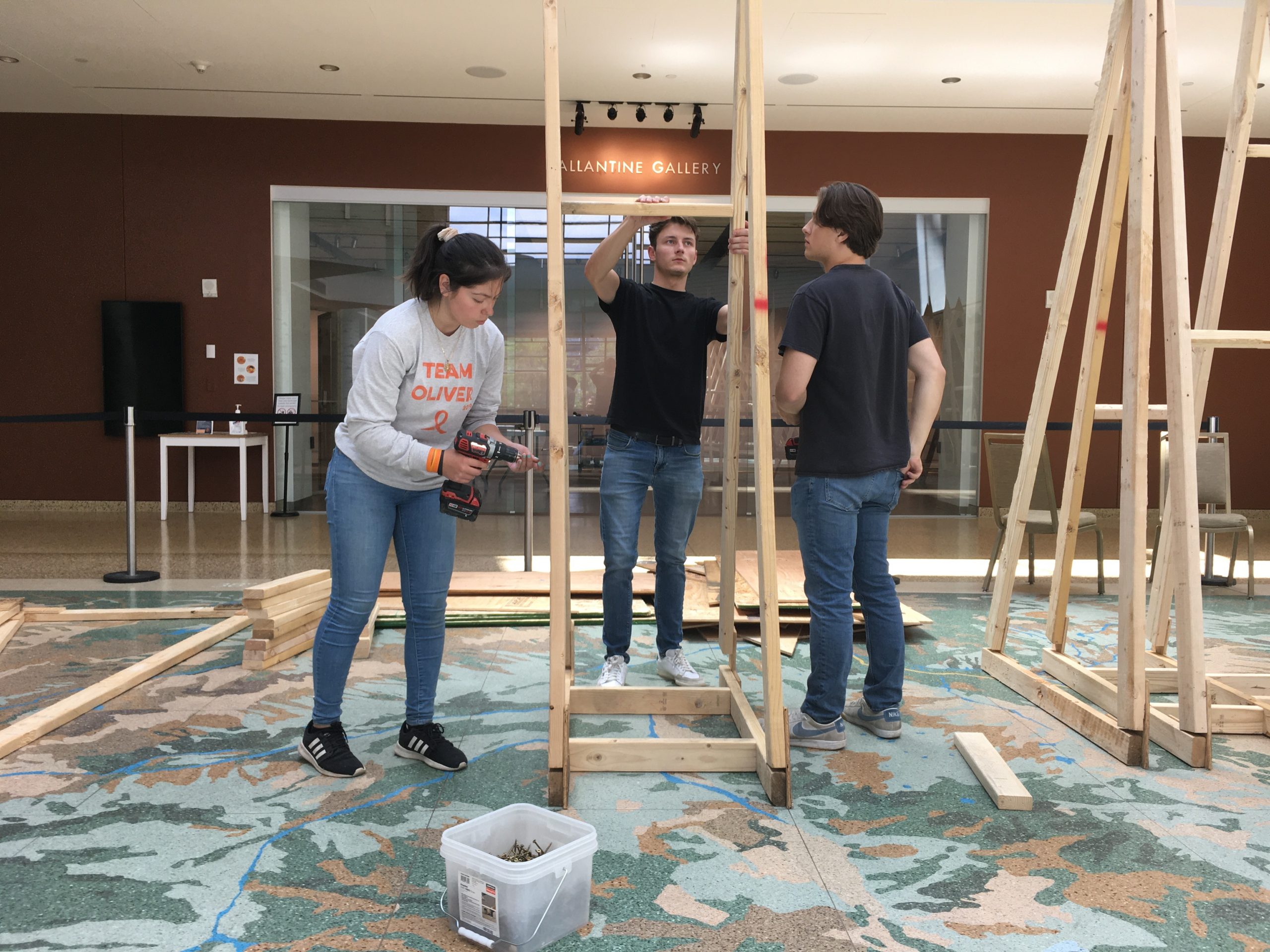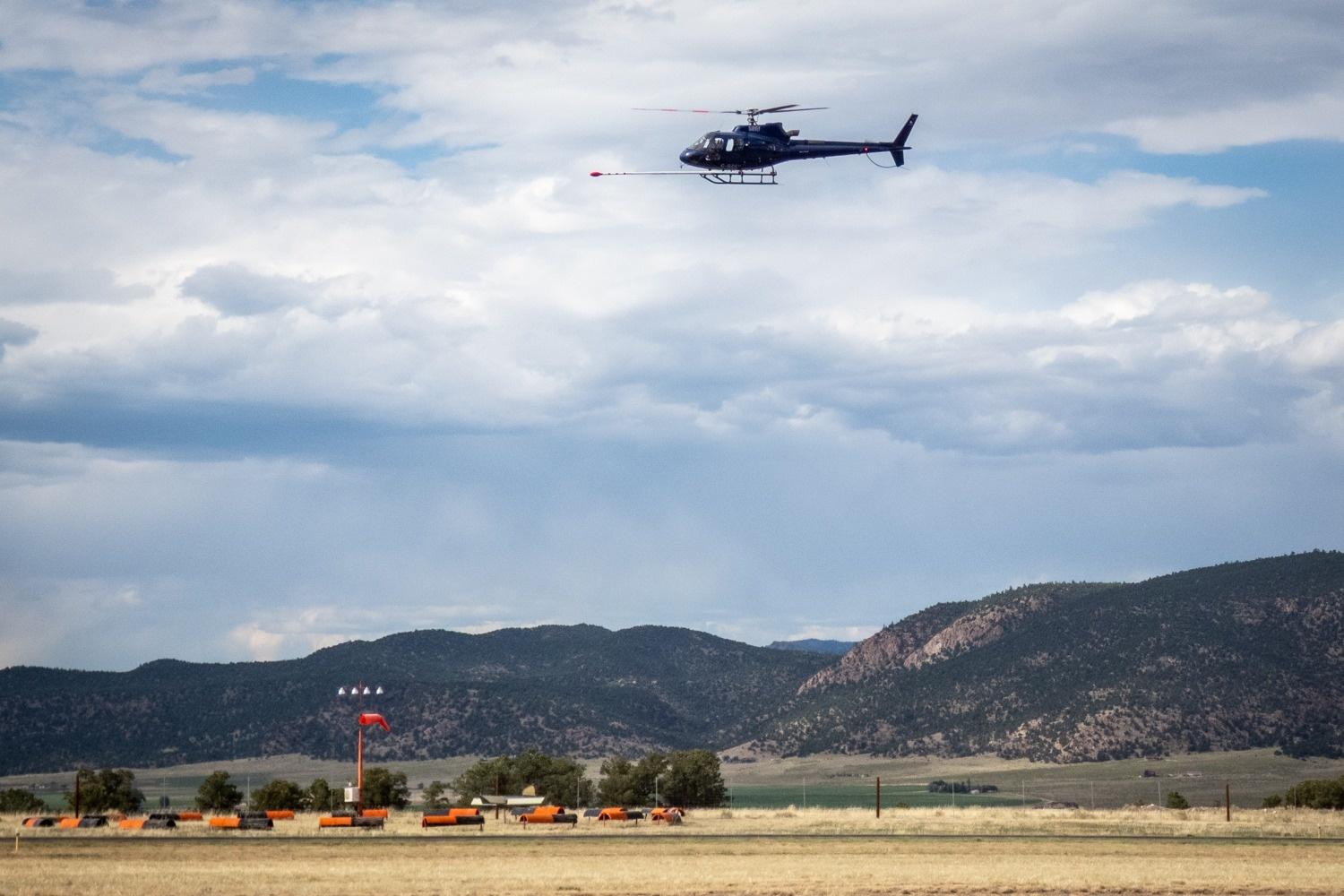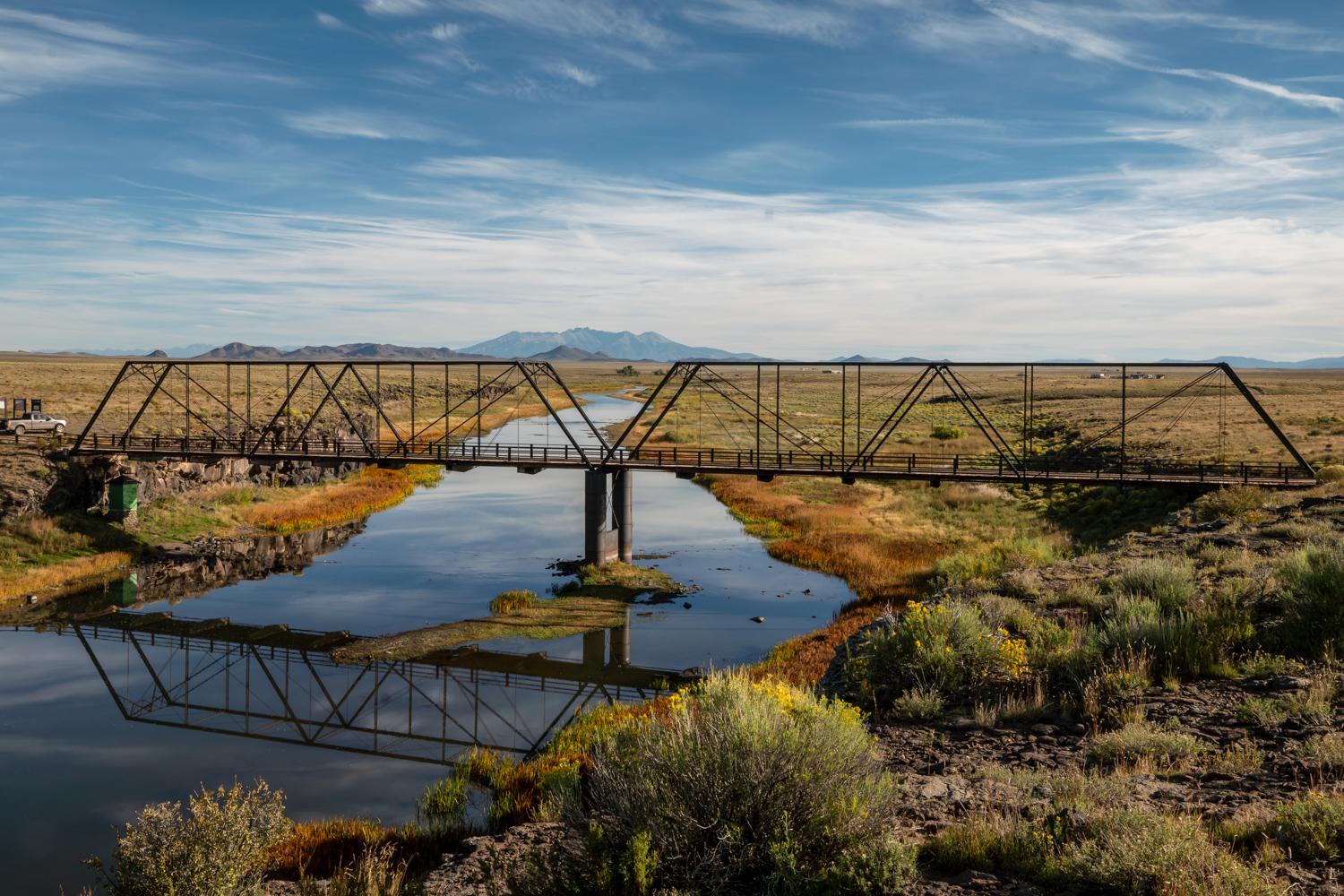
History Colorado Center may be known for its deep dives into the state’s past, but according to public historian & exhibit developer Julie Peterson, the historical institution is also looking for a glimpse at possible futures in its new exhibit, “Building Denver: Where Corners Meet.”
In collaboration with University of Colorado’s Denver College of Architecture & Planning, the Center offered its space to students and faculty to design and work on placemaking ideas about the future and to reflect on the city’s history.
“Building Denver: Where Corners Meet” begins even before the entrance, known as the center’s front porch. There, students from the University of Colorado Denver’s chapter of the National Organization of Minority Architects have built installations addressing the barriers that make cultural institutions difficult to access and exploring identity through design.
The next part of the installation is inside the center’s lobby, where students looked at the historically Black neighborhood of Five Points through an Afrofuturist lens, imagining what might have been were it not for Denver’s racial segregation, discrimination, and now, gentrification.
The third and final piece of the new exhibit is a survey of the visual styles that give Denver’s its architectural character in the center’s Anschutz-Hamilton Hall.
Peterson gave a quick overview of the 80-odd drawings that make up the collection, from the clashes of old and new architecture of places like the Denver Center for the Performing Arts to the kitschy western fronts of buildings intended to give the space more local character.
“In the past couple of years, we've really moved towards that idea of how does history inform the present and the future,” Peterson said. “Our mission is to use the past to inspire wonder, and so we really believe that history has the power to encourage us to make a better Colorado.”
The new exhibit is a bridge off of another recently installed showcase in the center, “Building Denver: Visions of the Capital City.” It is more firmly rooted in the past, looking back at Denver from the days of the gold rush to the present. Its photographs and architectural drawings take a look at how architectects, city planners and residents have shaped the city’s landscape over the decades.
Peterson credits History Colorado’s executive director Steve Turner, who’s also an architect, with bringing attention to the city’s sometimes misunderstood architecture. Yes, there’s the grand big skyscrapers and striking new buildings like History Colorado Center’s neighbor, the Denver Art Museum, but it’s the everyday designs of small shops and homes that give the city its character. What the future builders of tomorrow come up with next will also have an effect on the city’s visual identity.
“Building Denver: Where Corners Meet” is on display now through September 6th.








